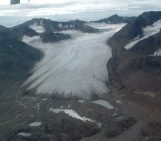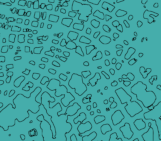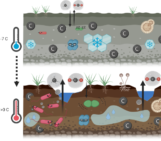
Humans rely on antibiotics for survival, but over time they are becoming less effective. So-called ‘superbugs’ are developing resistance to our most important drugs. The key to this global issue may be found in the cryosphere, where extreme microbiologists are hunting for new compounds in the cold that could help us win the war against antimicrobial resistance.
Discovering drugs in Earth’s coldest places
Antimicrobial resistance poses a global threat predicted to cause 10 million deaths per year by 2050.
Alexander Fleming’s 1928 discovery of penicillin- a compound produced from a fungus had an antimicrobial effect transformed life expectancy in the 20th century and kick-started the antibiotic revolution. Since then, most antibiotic drugs have been extracted from soil-dwelling microbes such as bacteria and fungi.
We can exploit these compounds produced by microbes to limit the growth of other microbes that are harmful to humans. The chemical structure of these compounds forms the basis of most antibiotics used today to treat microbial infections. However, soil has become an exhausted environment for drug discovery and researchers are turning to other environments in the search for new antimicrobial drugs.
One of these environments is the cryosphere, where diverse habitats in snow, glaciers, ice sheets and sea ice are dominated by microbes. Multiple stresses such as low temperature, high UV intensity, limited nutrient availability and variable salinity mean this extreme environment naturally favours only the hardiest microbes. In order to thrive, it is likely that microbes produce a variety of chemical warfare against their competitors, making the cryosphere a potentially rich reserve for bioprospecting new antimicrobial compounds.
Glacier microbes: all grown up!
Cultivation (growing microbes in a nutrient-containing growth medium in the laboratory) is a valuable technique for discovering new antimicrobial drugs because it allows scientists to take microbes from the environment and grow them in controlled conditions. In the cryosphere, glacier microbiologists have previously shown that many of the cultivable bacteria from these environments demonstrate potent antimicrobial activity. At least 219 novel natural products have been discovered thus far in polar organisms. In the face of widespread glacier and ice sheet melting, microbiologists must move quickly to find and cultivate these potential ‘cures from the cold’.

Fig. 2: A range of different single colonies isolated from a dilute sample of cryoconite, collected from the Foxfonna glacier, Svalbard in 2016. Samples have been grown on a range of different growth mediums [Credit: A. Debbonaire].
Microbial wars help humanity
Once bacteria have grown, we can exploit them. Any weaponry they produce to fend off competition can be extracted and tested against other microbes. We can assess their array of weapons by placing the growing bacteria under different stresses and seeing what compounds they produce to counteract it. Moreover, bacteria can be grown alongside other bacteria/fungi, increasing the likelihood that they fight each other by producing new chemical warfare that we can then use (Figure 3).
We can also test how powerful these weapons of microbial war are using a simple 24-hour test. By adding them to known concentrations of harmful bacteria such as Staphylococcus aureus (think MRSA) we can then monitor the bacterial growth over time after adding the potential antibiotic compounds. Little growth indicates that the new compounds are wreaking havoc and inhibiting growth – we have a new defence!
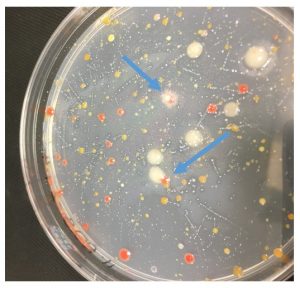
Fig. 3: Microbes grown from glacier samples compete with one another in a biochemical arms race [Credit: A. Debbonaire].
Cultivation’s “1% problem”
Cultivation is not the only way to bioprospect in the cold, especially because only 1% of the total microbial diversity of an environment is able to grow on growth media, meaning 99% of that diversity goes undiscovered. Our alternative is a technique known as metagenomics, which has been increasingly applied in the cryosphere over the past few years.
Metagenomics is an expensive but fast method of sequencing all DNA within an environmental sample to identify the microbial population that has been demonstrated to be extremely useful for glacier surface ecosystems and can even now be achieved on-site in extreme locations in the cryosphere in a relatively short time. However, metagenomics will only identify which microbes are present, not necessarily their capability, or more importantly, what compounds they produce when under stress. Both techniques combined are now applicable to exploring the cryosphere and provide the most robust approach to drug discovery in the cryosphere. In the war of microbe versus microbe, metagenomics shows which weapons may, or may not, be used; but cultivation provides a detailed analysis of the battle plan.
In summary…
The battle against drug-resistant microbes may be one of the major challenges facing humanity in the twenty-first century. Traditional sites for drug-discovery are being exhausted and researchers are turning to Earth’s coldest reaches to find stressed-out microbes that could provide us with new weaponry to fight the emerging ‘superbugs’. In this melting biome, researchers must act fast to gather the ‘cures from the cold’, exploiting the microbial life in the cryosphere to tackle a global threat to humanity.
Further reading
- Brown, E.D., Wright, G.D (2016): Antibacterial drug discovery in the resistance era, Nature, 529(7586): 336-343
- Vester, J.K., Glaring, M.A., Stougaard, P. (2015): Improved cultivation and metagenomics as new tools for bioprospecting in cold environments, Extremophiles, 19 (1): 17-29
- CNN News article about bioprospecting sea ice
Edited by Joe Cook and Clara Burgard
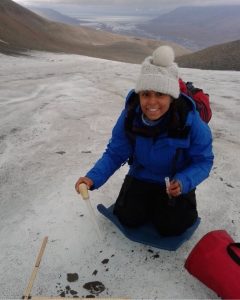 Aliyah Debbonaire is a PhD student at the Interdisciplinary Centre for Environmental Microbiology (Aberystwyth University). Her research aims to bioprospect extreme environments for life-saving drug candidates. She tweets as @Gnarliyah.
Aliyah Debbonaire is a PhD student at the Interdisciplinary Centre for Environmental Microbiology (Aberystwyth University). Her research aims to bioprospect extreme environments for life-saving drug candidates. She tweets as @Gnarliyah.

